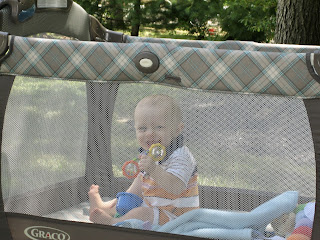Harold Henry Reese
Brooklyn Dodgers
Shortstop
Bats: Right Throws: Right Height: 5'10" Weight: 160
Born: July 23, 1918, Ekron, KY
Acquired: Obtained by the Boston Red Sox from the Louisville Colonels (American Association) as part of a minor league working agreement
Major League Teams: Brooklyn Dodgers 1940-1942, 1946-1957; Los Angeles Dodgers 1958
Hall of Fame Induction: 1984
Died: August 14, 1999, Louisville, KY (age 81)
Pee Wee Reese was one of the biggest stars and the captain of the Dodgers throughout the 1940s and 1950s, earning 10 All-Star Game nods and helping his team to seven National League pennants. Reese came up with the Dodgers in 1940 and he'd make his first All-Star team in 1942. After missing three full seasons while serving during World War II, Reese returned in 1946 and enjoyed nine straight All-Star seasons with the Dodgers, culminating with a World Series win over the Yankees in 1955. While playing steady defense at shortstop, he led the league in runs scored with 132 in 1949, in walks with 104 in 1947 and in stolen bases with 30 in 1952. Reese batted .272 in 44 World Series games, and finished in the Top 10 of National League MVP voting eight times. Reese showed unwavering support for his teammate Jackie Robinson (#30) during Robinson's early days in the majors. With racial slurs from spectators and opposing players, along with teammates initially refusing to play with Robinson, it was Reese who accepted and welcomed Robinson, putting his arm around him during pregame warm-ups before a game in Cincinnati.
The popular Reese played one season with the Dodgers in Los Angeles following their move west, retiring after the 1958 season. He batted .269 with 2,170 hits and 1,338 runs scored and with Robinson at second, comprised one of the finest double play combinations of his era. Reese still ranks among the top of all shortstops in games played (19th with 2,014), putouts (12th with 4,040) and assists (26th with 5,891). The Dodgers retired his #1 in 1984, the same year the Veteran's Committee inducted him into the Hall of Fame. Reese was a long-time announcer for nationally televised games throughout the 1960s.
Building the SetDecember 28, 2007 from Dad's eBay purchase - Card #332
I last shared this full story with the Whitey Ford (#240) post, but I'll repeat myself, in an edited version, here. The way my Dad and I finished the 1956 Topps set was somewhat anti-climatic but nevertheless a joyful memory. Leading up to the Christmas of 2007, my Dad (with the help of my Mom) scoured eBay and other online baseball card stores for the remaining 29 cards we needed to complete the set. Throughout the weeks and months leading up to the holidays, he knew we had completed the set but he kept it quiet, wanting to surprise me on Christmas morning. I have no idea, and I'll never know, what the true last card was that he acquired to finish off the set. And I have no record, nor was he able to tell me, how much they had paid for any of these final 29 cards. This Reese card was one of the final 29. Normally, this would have been considered a marquee card to add, but some of the other cards included within that final 29 haul were Roberto Clemente (#33), Whitey Ford (#240) and a spotless Checklist card for the 1st and 3rd Series.
The Card / Dodgers Team Set
Reese was exclusively with Bowman in 1954 and 1955, and this marks his first Topps card since 1953. The first cartoon on the back celebrate Reese's status as one of the Dodgers' all-time greats. The final cartoon panel explains he received his nickname by playing marbles and not entirely because of his short stature. The card was reprinted as part of the 1995 Topps Archives Brooklyn Dodgers set, and again in the 2019 Topps Update Iconic Card Reprint insert set.
I'm almost positive the action shot on the card is from a photo taken on October 4, 1955, during Game 6 of the World Series, and I found the photo (shown above) from Getty Images. A Topps artist must have been tasked with moving the ball from in front of Reese's face to a foot or so to the side of him. The play happened in the bottom of the seventh. With Billy Martin (#181) on first, Yogi Berra (#110) grounded to first base, with Gil Hodges (#145) throwing to Reese to force out Martin. Reese's throw back to first would be late, with the Yankees avoiding the double play. The Yankees would win the game, 5-1, but Johnny Podres (#173) pitched a shutout in Game 7 to give Brooklyn their lone World Championship title.
1956 Season
Reese and the Dodgers enjoyed one last hurrah in Brooklyn, winning the National League pennant, but this time falling to the Yankees in seven games in the World Series. Now 37 years old, Reese was still the club's regular shortstop, playing in 147 games and batting .257 with nine home runs and 46 RBIs. It was to be his last year as a regular, with Charlie Neal (#299) getting the bulk of playing time at shortstop for the Dodgers in 1957.
1956 Season
|
|
|
|
|
First Mainstream Card: 1941 Play Ball #54
Topps Flagship Set Appearances (5): 1952-1953, 1956-1958
Most Recent Mainstream Card: 2022 Topps Chrome Platinum Anniversary #341
702 - Reese non-parallel baseball cards in the Beckett online database as of 8/20/23.
Sources:
Baseball Reference
Beckett Database
SABR
The Trading Card Database
The Trading Card Database
Previous Card / Next Card
Order Collected: #257 Bobby Thomson - Milwaukee Braves / #271 Foster Castleman - New York Giants


.jpg)








.jpg)








.jpg)





